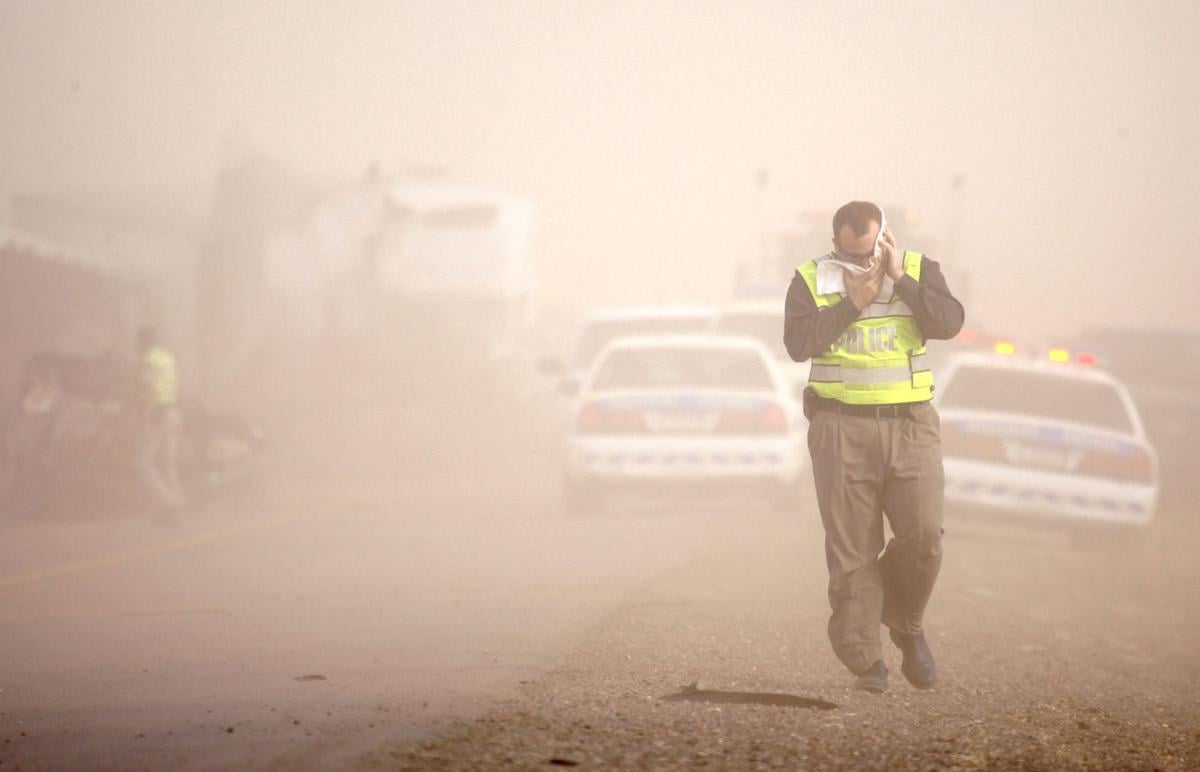Regular readers may recall the infamous half-mile stretch of Interstate 10 just north of Picacho Peak.
To jog your memory, between 2010 and 2015, there were 83 blowing-dust-related crashes on an 87-mile stretch between Tucson and Phoenix, more than half of which — 43, including two fatal incidents — occurred in that minuscule section, according to Arizona Department of Transportation figures.
That staggering toll led to two parallel state efforts to make the perilous passage less so. One is a high-tech, $12.8 million warning system that can detect blowing dust and reduce speed limits along a 10-mile stretch accordingly. Construction could start as soon as this fall.
The other was an effort to identify the source of much of the dust implicated in those crashes and mitigate it, and now there’s a plan to do just that.
After several months of research and investigation, the multi-agency I-10 Dust Group, which includes the Arizona Department of Environmental Quality, ADOT, the Department of Public Safety and other state and tribal bodies, has honed in on a single piece of land they call the “parcel of concern,” according to June meeting minutes.
Seen from space — courtesy of Google Maps — the 160-acre lot is mostly bare, denuded desert along the banks of a canal, making it stand out from surrounding tracts of land that are either planted or covered to some degree by desert vegetation.
And that’s exactly the problem, according to ADEQ’s Len Drago, deputy air-quality director and member of the dust group.
That canal “obstructed the natural water flow to sustain the natural vegetation for the desert,” Drago said of his group’s findings. On top of that, the soil on the plot is “almost powder-like,” making it easy for wind gusts to carry blinding dust across nearby I-10. There was little evidence that grazing played a role in the land’s condition.
The owner of the land, Houston real estate broker Louis Tsakiris, allowed state officials to conduct the soil sampling on his property, according to Drago. Tsakiris, who purchased the “parcel of concern” and another similarly sized neighboring lot in 2016, according to Pinal County assessor records, did not respond to several messages seeking comment by deadline.
So, to tackle the dust, Drago’s group intends to apply chemical dust-suppressant on a portion of Tsakiris’ land, something that could be finished by the end of September if all goes well. He described it as a “sticky compound” that dries on the ground, forming a crust.
Access agreements for the next step are “written and drafted,” and officials expect to meet with Tsakiris as soon as this week. Drago said there has been “no obstruction to date” from the landowner.
Though there aren’t any official estimates for the project yet, Drago said a typical application of the proposed treatment costs roughly $100,000 for every 25 acres, and officials have their eyes on around 50 acres of Tsakiris’ land.
While the treatment will miss the monsoons and their famously powerful dust storms, Drago pointed out that many of the crashes along the stretch in question actually occurred in the fall. Additionally, the incidents were often tied to local, channelized wind events, not massive dust storms that travel miles.
Drago described the chemical treatment as a “huge first step” and said its effectiveness would be closely monitored. If it doesn’t work, officials could consider seeding or recontouring the property with the landowner’s permission.
Construction on the far-more-costly dust-warning system could start shortly after the treatment is on the ground. Drago and ADOT spokesman Tom Herrmann described the two parallel efforts as “complementary,” not redundant.
“There’s a very important public-safety issue to be resolved and it’s certainly prudent to look at all of the ways that we could address it,” Herrmann said.
He pointed out that the dust-suppression measure only addresses dust blown from a single plot of land and does nothing to address dust blowing in from elsewhere or to haboobs. The warning system is designed to be responsive to large and small dust events alike.
“I think together, we can make that stretch of road safer,” Herrmann said.





